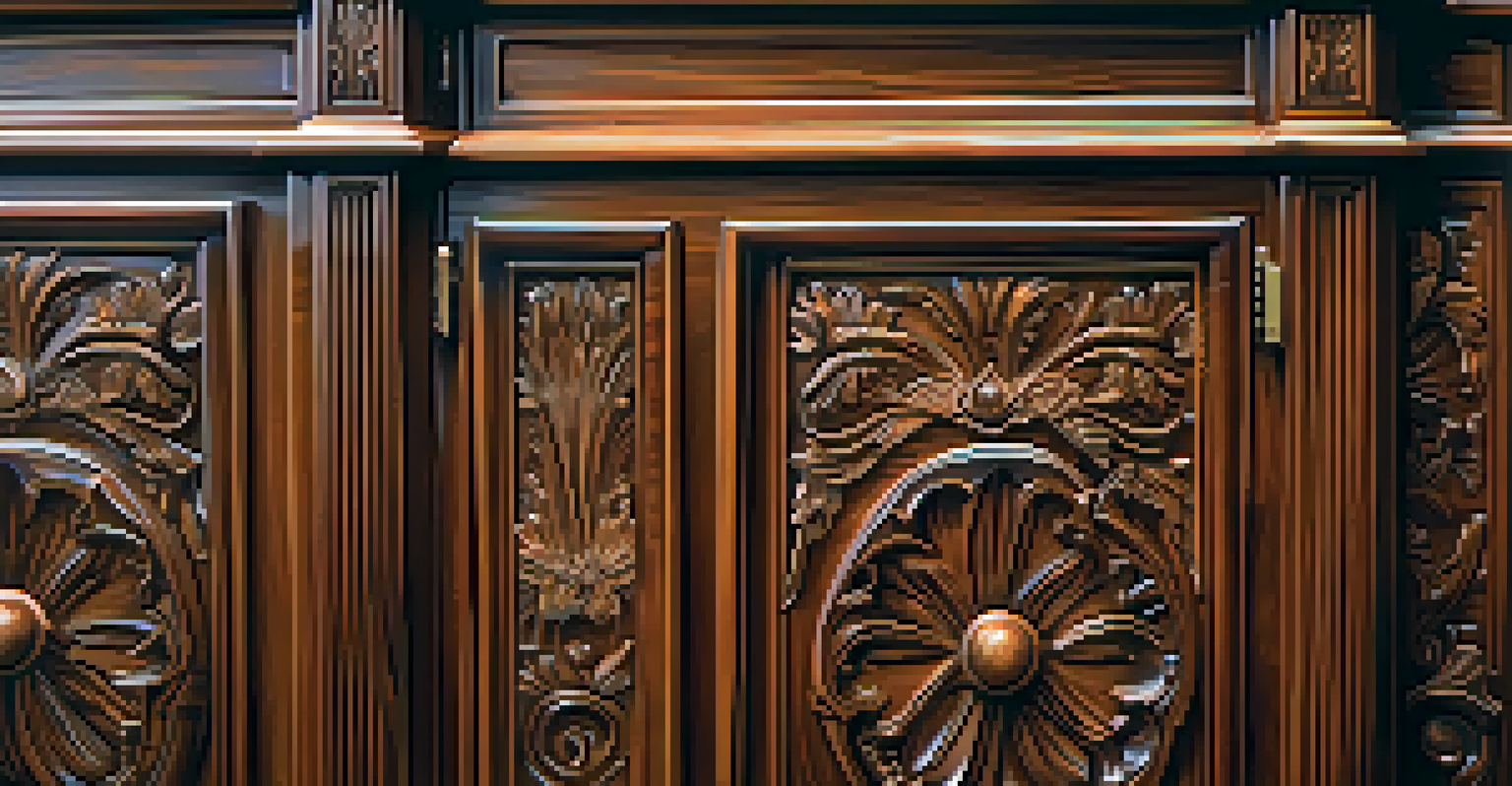The Best Types of Paint for Different Surfaces in Your Home

Choosing Paint for Interior Walls: The Basics
When it comes to painting your interior walls, the right type of paint can make all the difference. Generally, latex paint is a popular choice due to its ease of use and quick drying time. It's water-based, which means it's low in odors and cleans up easily with soap and water, making it a family-friendly option.
Color is the keyboard, the eyes are the harmonies, the soul is the piano with many strings.
For high-traffic areas like hallways or children's rooms, consider using a satin or eggshell finish. These finishes offer a bit more durability and are easier to clean than flat paints, which can show marks and scuffs more easily. So, if your walls are susceptible to fingerprints or dirt, opting for a washable finish is a smart move.
Don't forget about selecting the right color! Lighter shades can make a space feel larger and more open, while darker colors can create a cozy atmosphere. Test samples on your walls before making a final decision to see how they look in different lighting throughout the day.
Best Paint for Exterior Surfaces: Weather Resistance Matters
Exterior surfaces face harsh elements, so choosing the right paint is crucial for longevity. Acrylic latex paint is highly recommended for outdoor projects because it resists fading and can expand or contract with temperature changes. This flexibility helps prevent cracking and peeling, which is essential for maintaining a fresh look.

Additionally, consider a semi-gloss finish for trim and moldings, as it provides extra durability and is easier to clean. This finish also reflects light, adding a touch of elegance to your home's exterior. Remember to prep the surfaces properly by cleaning and priming them for the best results.
Choose the Right Paint Type
Different surfaces require specific paint types, such as latex for interiors and acrylic latex for exteriors, to ensure durability and ease of application.
Lastly, don’t forget to check the weather before painting! Ideally, you want to paint on a dry day with temperatures between 50°F and 85°F. This will ensure the paint adheres properly and dries evenly, protecting your home from the elements.
Selecting Paint for Wood Surfaces: A Smooth Finish
Wood surfaces, whether they’re furniture or trim, require special attention when it comes to selecting paint. Oil-based paints are often preferred for their durability and smooth finish, making them ideal for high-traffic items like cabinets or doors. They also provide a rich, glossy look that can elevate the overall aesthetic of your space.
The details are not the details. They make the design.
However, water-based paints are gaining popularity for wood surfaces as well, thanks to their low VOC levels and easy cleanup. They dry quickly and can be used for indoor projects without the strong odors associated with oil-based paints. Just make sure to use a good primer to promote adhesion.
A tip for achieving a flawless finish is to sand the surface beforehand and use a high-quality brush or roller. Taking your time during the application process will help you avoid visible brush strokes and create a professional appearance.
Choosing Paint for Metal Surfaces: Rust Prevention
Metal surfaces present unique challenges, particularly when it comes to rust and corrosion. For these surfaces, using a rust-inhibiting primer followed by an oil-based or acrylic paint is essential. This combination not only protects the metal but also provides a sleek finish that enhances its appearance.
It's crucial to prepare the metal surface properly by cleaning it thoroughly and removing any rust before painting. A wire brush or sandpaper can help with this process, ensuring the paint adheres well and lasts longer. Skipping this step can lead to peeling and bubbling down the line, which is something no one wants to deal with.
Color Selection Matters
Choosing the right color can significantly impact the feel of a space, with lighter shades creating openness and darker tones fostering coziness.
Once painted, metal surfaces are often exposed to moisture and temperature changes, so look for paints specifically labeled for metal use. These paints are formulated to withstand these conditions, ensuring your metal items stay looking great for years to come.
Best Paint for Drywall: Achieving a Smooth Look
Drywall is the most common interior surface in homes, and it benefits greatly from the right paint choice. Flat or matte finishes are often recommended for ceilings and walls because they help hide imperfections and provide a uniform appearance. However, they can be more challenging to clean, so think about where you're applying them.
In spaces like kitchens or bathrooms, where moisture can be a concern, using a satin or semi-gloss finish can be wise. These options are easier to wipe down and resist mildew, making them ideal for humid environments. It's all about balancing aesthetics and functionality.
Before painting drywall, ensure that the surface is primed. This step enhances the paint's adhesion and helps prevent any chalky residue from appearing over time. A well-prepped surface will ensure your paint job looks fresh and lasts longer.
Paint for Tiles: Refreshing Old Surfaces
If you're looking to breathe new life into old tiles, specialized tile paint can work wonders. These paints are designed to adhere to slick surfaces and resist moisture, making them perfect for bathrooms and kitchens. A fresh coat can completely transform your space without the need for a full renovation.
When selecting tile paint, make sure to choose a product that is specifically labeled for tiles. This ensures that you get the best adhesion and durability. A water-based epoxy paint is often a great choice, as it provides a strong finish and is resistant to wear and tear.
Proper Surface Preparation Is Key
Cleaning and priming surfaces before painting is crucial for adhesion and achieving a professional finish, regardless of the material being painted.
Before you start painting, clean the tiles thoroughly and allow them to dry completely. Applying a primer can also help with adhesion and ensure an even color. With the right preparation and product, your old tiles can look brand new!
Choosing Paint for Concrete Surfaces: Durability is Key
Concrete surfaces, such as floors or walls in basements, require durable paint that can withstand wear and tear. Epoxy paint is a fantastic option for concrete, providing a tough, long-lasting finish that resists stains and moisture. It's often used in garages or high-traffic areas due to its resilience.
When painting concrete, it's essential to ensure the surface is clean and free of any oils or dirt. A good cleaning with a concrete cleaner, followed by a rinse, will help the paint adhere better. Additionally, consider applying a concrete primer to enhance adhesion and durability.

Finally, remember that concrete paint can take longer to cure than other types of paint, so be patient. Allow ample time for the paint to dry and cure properly before putting heavy objects back on the surface to ensure a lasting finish.